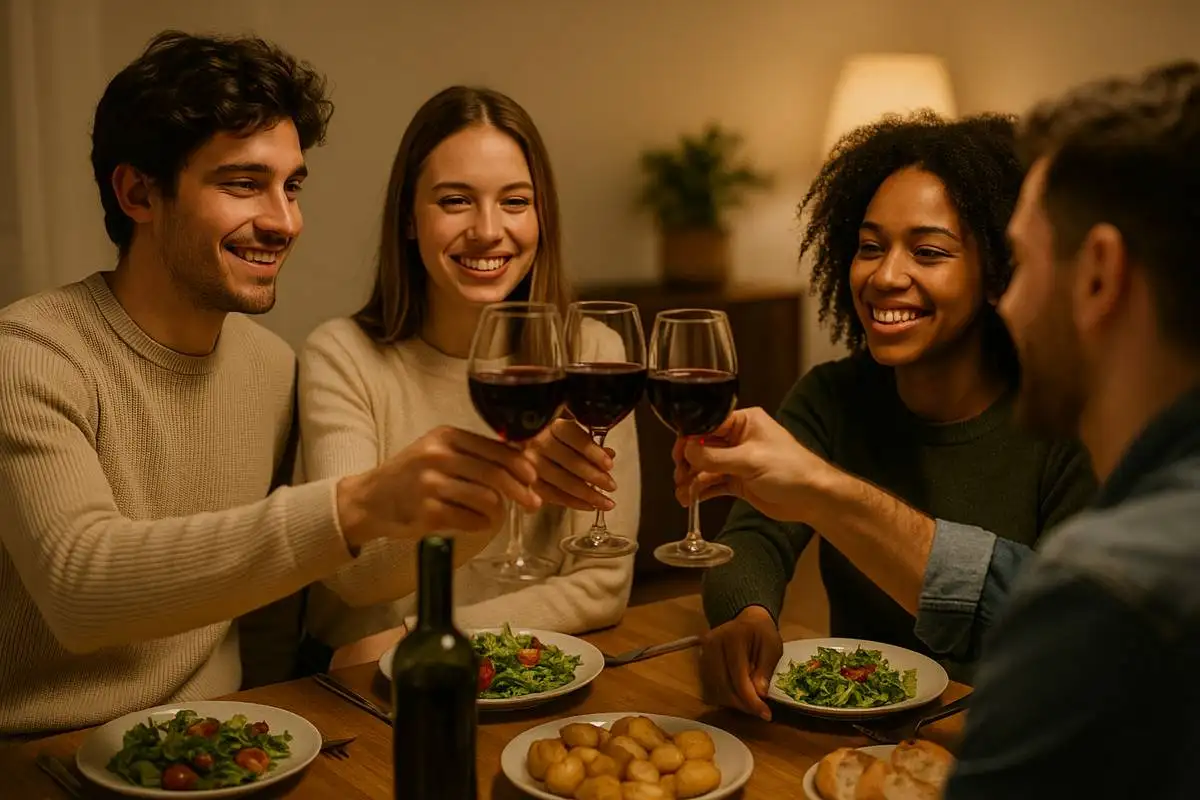
Generation Z? Curious and aware, but with new habits.
Presented at Vinitaly, the research “Wine and Young Italians” by the students of IULM University during the tasting-event organized by the National Association Le Donne del Vino highlighted the connections between taste and the mind.
What is the relationship between young people and wine?
They consume it, buy it, and gift it, but often without really knowing it. This is the picture that emerges from the research “Wine and Young Italians: habits, purchases, and perceptions” presented on Tuesday, April 8 at Vinitaly during the event “Wine Tricks: when the mind tastes before you”, promoted by the National Association Le Donne del Vino and curated by Professor Vincenzo Russo, expert in Consumer Psychology and Neuromarketing at IULM University in Milan.
The survey, conducted by his students on a sample of 188 young people aged between 18 and 25, shows a Generation Z fascinated by the world of wine but with still limited knowledge (average 2.99 out of 6).
Red wine is the favorite (40.8%), followed by white wine (38%), while consumption occurs mainly at restaurants (61.1%) and at home (62%), less so in bars, wine shops, or nightclubs.
The reasons for purchase are linked to social occasions: parties (19%), moments with friends and family (18.2%), gifts and weekends. The most popular price range is between 10 and 25 euros, and the main channels remain supermarkets, restaurants, and bars. The purchase is guided by personal experience (20.2%), word of mouth (19.5%), and price (19.4%), while label, packaging, and sustainability matter less. The symbolic aspect is also reduced: wine “does not confer status,” with low scores for the statements “it makes me feel powerful” or “it increases my social prestige.”
The data becomes experience with the Wine Tricks tasting
To give form and substance to these numbers, the Wine Tricks event took participants on a neuroscientific journey through perception, emotions, and purchasing decisions, with an immersive experience designed to touch firsthand the functioning of our mind in front of a glass of wine.
From the live eye-tracking experiment – showing the neurological reactions of a volunteer in front of a virtual shelf – to the Super Taster or Low Taster test to measure taste sensitivity, to a sensory illusion that made people reflect on the difference between what we feel and what we perceive: everything helped show how much consumption choices are guided by often unconscious processes.
“Young people are not simply consumers to target, but people to truly understand, with their emotions, expectations, and values,” said Daniela Mastroberardino, president of the National Association Le Donne del Vino.
“Generation Z is curious, sensitive, and much more aware than one might think: they’re not just looking for a good product, but for an experience, a story, a meaning. With Wine Tricks, we wanted to show how the mind influences choices and how understanding how the brain works can help the wine world communicate more empathetically and effectively.”
“Wine is a multisensory and cultural product, but our choices toward it are never purely rational,” explained Professor Vincenzo Russo.
“With Wine Tricks, we demonstrated how the mind profoundly influences taste perception and purchasing decisions, even before the wine is tasted. Through tools such as electroencephalogram, eye-tracking, sensory tests, and psychophysiological emotion measurement, we can now better understand how consumers — especially younger ones — experience wine and how context influences what we perceive. This is where truly effective communication strategies are born.”
In-depth | Wine and young Italians: habits, purchases, and perceptions
The research conducted by the students of IULM University highlights how wine consumption among young Italians of Generation Z, aged between 18 and 25 (188 respondents), is characterized by a certain curiosity, but also limited competence: on a scale from 1 to 6, the average declared competence is 2.99.
Red wine remains the favorite with 40.8% of preferences, followed by white wine (38.0%), rosé (10.6%), and to a lesser extent sparkling wines (6.4%), sweet wines (3.8%), and fortified wines (0.5%).
The places of consumption show a clear preference for restaurants (61.1%), followed by home consumption (62.0%), bars (20.2%), wine shops (11.7%), events (6.1%), and nightclubs (5.6%).
Regarding the purchase of wine products, there is a prevalence of occasional consumers (40.6%), with 26.5% declaring they rarely buy wine and only 5.9% saying they buy it frequently.
The reasons that drive young people to buy wine are mainly related to social occasions: parties (19%), moments with friends and relatives (18.2%), but also gifts (15.9%), weekends (15.6%), and personal passion (15.4%), confirming that wine is associated more with social and sharing moments than with daily routine.
Young people are not willing to spend much: most fall into the €10–15 (30.5%) and €15–25 (30.2%) ranges per bottle. Only 12.2% spend more than €25, while 3.3% spend less than €5.
The most used purchase channels are supermarkets (23.2%), followed by restaurants/pizzerias (21.7%), bars/clubs (21.2%), and wine shops (19.7%), while online shopping is still marginal (14.2%).
The purchase decision is influenced by previous consumption experience (20.2%), recommendations from friends and family (19.5%), and price (19.4%).
Factors such as the label, packaging, or sustainability play a role, but a secondary one. The influence of traditional media (14.5%) and social media (15.2%) remains low.
In terms of perception, wine is not particularly associated with social status among young people: statements such as “it makes me feel powerful” or “it increases my status” score between 3.09 and 3.16, on a scale from 1 to 6.
